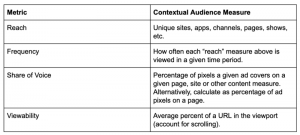Despite the ease of online shopping, consumers still crave the tactile experience of physical stores. Columnist Allan Haims explains how retailers can unify their channel strategies and take a best-of-both-worlds approach.
 While people relish the convenience and vast inventory available via online shopping, today’s shoppers are still drawn to physical store locations to tangibly touch items, make purchases and process returns or exchanges. Rather than pitting the two channels against each other, retailers can secure a much larger wallet share by giving consumers the best of both worlds through the adoption and use of new technologies.
While people relish the convenience and vast inventory available via online shopping, today’s shoppers are still drawn to physical store locations to tangibly touch items, make purchases and process returns or exchanges. Rather than pitting the two channels against each other, retailers can secure a much larger wallet share by giving consumers the best of both worlds through the adoption and use of new technologies.
By offering complementary benefits, as well as engaging customers via mobile, both in-store and online retailer channels can strengthen overall customer engagement and brand affinity. And the best news for retailers taking an integrated approach: higher revenues and profitability.
Major retailer players from both sides of the aisle are pushing hard to expand their presence both online and in-store. Just this month, Amazon made a major move in spreading its physical presence with the purchase of Whole Foods, thereby seeking to reinvent the retail customer experience with its supply chain, logistics and customer service prowess. Walmart is stepping up its efforts in the online world with its announcement of an acquisition of online retailer Bonobos on the heels of its earlier purchase of online women’s apparel retailer ModCloth in March.
So what does this all mean for specialty retailers, and how can they take a best-of-both-worlds approach through a unified lens? Let’s take a closer look.
Don’t ignore the ‘touch-and-feel’ aspect
For some online-only concepts, corporate executives are realizing that the “look before you buy” experience requires a certain level of physical presence. As an example, online-only mattress company Casper began a partnership with Target earlier this year to maximize its reach to consumers looking for a touch-and-feel experience prior to purchase. Similarly, online discount eyewear powerhouse Warby Parker continues to add brick-and-mortar stores to its portfolio.
On the flip side, Amazon just launched Prime Wardrobe, which is a new service described as “bringing the fitting room to you, so you can try on the latest styles and find your perfect fit before you buy.” Prime members can order clothes, shoes and accessories without an upfront charge and get seven days for a test drive. By all accounts, this is challenging the old school brick-and-mortar model by giving apparel consumers the ease of shopping online combined with the ability to experience merchandise firsthand.
Added offline incentives based on online purchases
Major brands are looking at incentives to drive online sales while pushing the shopper to the physical location through discounts on purchases, free or heavily discounted add-on items and superior in-store customer service. Walmart recently introduced Pickup Discount, which offers shoppers a discount on eligible online-only items that are shipped to individual Walmart locations for pickup. Nearly half of all online orders from home improvement giant Home Depot are picked up in the store, according to Forbes. As many brick-and-mortar retailers struggle with competitive pricing and inventory fulfillment challenges, these offline incentives meet consumers’ needs.
Conversely, Amazon offers nearly everything under the sun at low prices, but it decided to begin opening physical storefronts to accommodate consumer preferences for same-day pickup, in-store returns and other in-store perks that keep consumers coming back.
Further, partnerships and acquisitions with other retailers yield a treasure trove of retailer consumer data, including buying preferences, demographics and behavior patterns that allow for more personalized engagement with shoppers — no matter the channel.
Payment perks
Amazon also has made loyalty strides in introducing Amazon Prime Reload, which gives Prime customers 2 percent cash back on purchases when they load funds into their Amazon Balance via a debit card attached to a bank account. This is similar to Target’s Redcard debit card concept, which gives shoppers 5 percent cash back on Target and Target.com purchases.
These perks cross channel lines and make it easier for the consumer to do business with retailers in a way that makes the most sense for them — whether in store, online or mobile. Other retailers are offering secure cross-channel options to pay for items, such as Dunkin’ Donuts’ use of Masterpass by Mastercard and AutoZone and Dollar General’s convenience use of payment giant PayPal that allows customers to skip long lines and pick up purchases immediately.
Looking beyond single-day and seasonal promotions
While online sales have had good results with large one-day sales, e.g., Amazon Prime Day, brick-and-mortar retailers have seen Black Friday-type sales creep into month-long cycles of sales that no longer draw the kinds of crowds and dollars that were once a hallmark of American shopping. Instead, brick-and-mortar and online must band together in promotional and customer service strategies that serve the needs of both audiences.
Brands with a brick-and-mortar presence tend to offer a more personal customer experience versus their online-only competition, but they often fall short on convenience and rapid inventory availability. However, through an integrated approach, these same retailers can deliver the accessibility of online shopping and the advantage of personalization, tailored advice and support in product fulfillment when products are out of stock or unavailable.
Both Best Buy and Home Depot are among the retailers that have adopted a blended omnichannel strategy and increased or sustained revenues while not opening a single additional retail store this past year.
Whether engaging with consumers via mobile with personalized offers when they enter the store or letting them know that an abandoned shopping cart item is now on sale in the store, retailers have a lot to gain by unifying their channel strategies.
Some opinions expressed in this article may be those of a guest author and not necessarily Marketing Land. Staff authors are listed here.
Marketing Land – Internet Marketing News, Strategies & Tips
(59)






